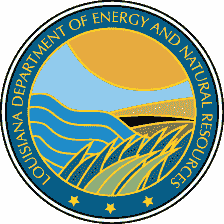Top Stories
Deepwater Wellhead Containment Test a Success
DNR Secretary Scott Angelle briefed by chief of federal offshore safety program

BATON ROUGE – Louisiana Department of Natural Resources (DNR) Secretary Scott Angelle this week received a personal briefing and update from the federal government’s top offshore drilling safety regulator on the successful test of a new deepwater wellhead containment system in approximately 7,000 feet of water in the Gulf of Mexico, a test that proved the technology and the expertise are available to respond rapidly and effectively if a deepwater wellhead must be shut down.
James Watson, director of the U.S. Bureau of Safety and Environmental Enforcement (BSEE), visited Gulf of Mexico operations and observed a simulated well-control incident staged in 7,000 feet of water that involved preparation and transport of the equipment designed to cap deepwater wellheads, landing the equipment on a test wellhead, latching on and pressurizing the system to prove it would shut in an actual wellhead.
After the successful test, in which the capping equipment built and operated by the Marine Well Containment Company (MWCC) was delivered, deployed and latched on to the test wellhead in just under five days, Watson and senior managers with MWCC briefed Angelle on the operation and their observations.
"This is another step in returning confidence to the industry that it will be allowed to operate and develop the plentiful domestic energy resources available in the Gulf of Mexico. This exercise has shown us all that the U.S. oil and gas industry has responded in an unprecedented way to create the world’s most sophisticated containment response program,” Angelle said. “I am very bullish on the opportunities for the Gulf of Mexico to provide energy for the nation and create jobs for American workers.”
Angelle congratulated the MWCC team and its leaders for their focus in developing an effective containment system and the readiness to respond they demonstrated in the operational test.
MWCC is a partnership originally formed by Chevron, ConocoPhillips, ExxonMobil and Shell to share in the costs of design, construction and operation of the more-than-$1-billion deepwater containment system following the 2010 Gulf Oil Spill and subsequent months-long moratorium on deepwater drilling. Other deepwater operators that have joined the group, committing their resources to maintaining the system, are Anadarko, Apache, BHP Billiton, BP, Hess and Statoil.
Through the moratorium and the subsequent slowdown in the pace of permitting in the federal waters of the Gulf, Angelle has led the state’s efforts to mediate issues between federal regulators and energy exploration companies through the Back-To-Work Coalition, an association of Gulf exploration stakeholders that has worked, and continues to work, to find a regulatory middle ground that ensures safe and responsible operations while allowing development of the resources that provide domestic energy and domestic jobs.
Angelle said the impressive results from the operational test of the containment system provide a new measure of safety for the Gulf of Mexico and the states that border it, potentially removing a hurdle for companies working with regulators in trying to gain access to operate in federal waters and provide domestic energy and jobs.
“Access to the oil and natural gas resources is a critical factor in our endeavor to harvest the energy of the Gulf of Mexico,” Angelle said. “This successful test demonstrates to the nation that increased access is warranted.”
More information on the MWCC containment system, including photos and video, can be found at http://www.marinewellcontainment.com.
News Archives »